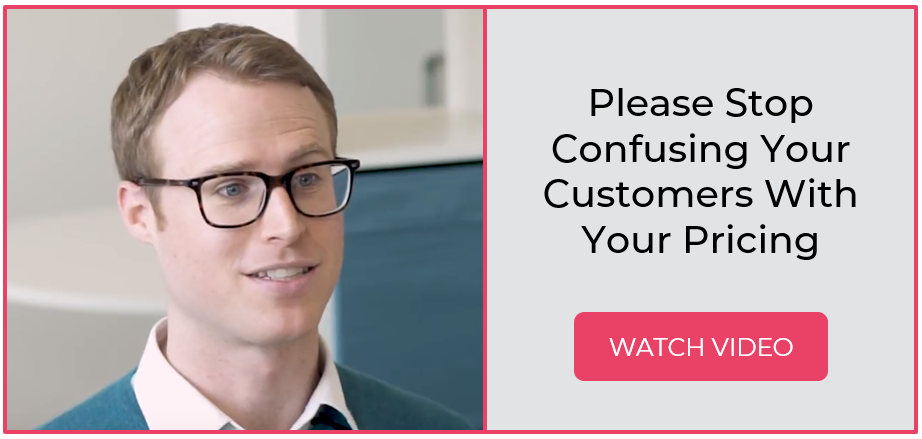
Pricing is one of the four elements of the marketing mix, along with product, place and promotion. An effective pricing strategy is vital for companies who wish to achieve success by finding the price point where they can maximize sales and profits. Companies may use a variety of pricing strategies, depending on their own unique marketing goals and objectives – and also on which industry they represent.
Price setting and price getting require discipline, not luck. Companies differ substantially in their approach to price setting but most (whatever the industry) use one of these three strategies: cost-based pricing, competition-based (dynamic) pricing or value-based pricing.
Manufacturing
The most popular pricing strategy used within manufacturing is cost-based pricing. Decisions here are influenced primarily by accounting data, with the objective of getting a certain return on investment or a certain markup on costs.
It uses manufacturing costs of the product as its basis for coming to the final selling price of the product - either a fixed amount or a percentage of the total product manufacturing cost is added as profit to the cost of the product to arrive at its selling price.
Advantages for manufacturing industries using cost-based pricing
- A straightforward and simple strategy.
- Ensures that all production and overhead costs are covered before profits are calculated.
- Ensures a steady and consistent rate of profit generation.
- It allows the manufacturer to consider how various levels of output can affect the product price. Also, the manufacturer can examine how various prices will affect the amount of output needed.
Disadvantages for manufacturing industries using cost-based pricing
- May lead to underpriced products.
- Demand for a product will directly affect how much people will pay. If the customer believes a product may be in short supply due to heavy demand, they may be willing to pay more. On the other hand, if demand is very low the customer will look for a discount on the price.
- Competition is not included in cost-based pricing methods. In a competitive market, cost-based pricing may encourage competitors to enter the market
with a lower price.
Cost-based pricing can be of three types
- Cost-plus pricing is a strategy whereby you add together the direct material, labour and overhead costs for a product, and add to it a markup percentage (to create a profit margin) in order to derive the price of the product.
- Markup pricing is the practice of adding a constant percentage to the cost price of an item to arrive at its selling price.
- Planned profit pricing is very suited to manufacturing businesses. A manufacturer often has the ability to increase or lower production depending upon the demand or profit available.
Travel, Hospitality, Ecommerce, Retail
The most popular pricing strategy used in these industries is dynamic pricing. The aim of dynamic pricing (also referred to as surge pricing or demand pricing) is naturally to increase revenue but it also allows businesses to set flexible prices for products or services based on current market demands.
Businesses are able to change prices based on algorithms that take into account competitor pricing, supply and demand, and other external factors in the market.
Hotels and other players in the hospitality industry use dynamic pricing to adjust the cost of rooms and packages based on the supply and demand needs at a particular moment. The goal is to find the highest price that consumers are willing to pay.
The strategy features price increases when demand is high and price decreases to stimulate demand when it is low. Having a variety of prices based on the demand at each point in the day makes it possible for hotels to generate more revenue by bringing in customers at the different price points they are willing to pay.
Airlines often change prices depending on the day of the week, time of day, and number of days before the flight. For airlines, dynamic pricing factors-in different components such as: how many seats a flight has, departure time, and average cancellations on similar flights.
Sports and theatre ticketing is a segment of the entertainment industry that uses real-time pricing to boost revenue. Outdoor sports have to factor weather into a pricing strategy, in addition to the date of the game, date of purchase, and opponent.
Tickets for a game during inclement weather will sell better at a lower price; conversely, when a team is on a winning streak, fans will be willing to pay more. Theatre tickets can be reduced if a show has not proved to be as popular as others on offer – and/or staged at less popular times.
Retailers (and online retailers in particular) adjust the price of their products according to competitors, time, traffic, conversion rates and sales goals. There are three basic ways to do this:
- Use of price intelligence to re-price based on the prices of their competitors.
- A drop in prices when demand is low.
- An increase in prices when demand is high.
Dynamic Pricing at Amazon Marketplace
The average shopper probably thinks Amazon has the lowest prices anywhere on the web. That's not always true because Amazon will tweak its prices many times per hour (equalling millions of individual price changes per day), taking advantage of the psychology of price perception.
Amazon does this with a clever strategy that makes it seem like it undercuts its competitors more often than it does. It offers its biggest discounts on its most popular products, while making profits on less popular ones, according to an analysis by Boomerang Commerce, a dynamic pricing company.
"Amazon may not actually be the lowest-priced seller of a particular product in any given season," the report reads, "but its consistently low prices on the highest viewed and best-selling items drive a perception among consumers that Amazon has the best prices overall."
Boomerang points out that the idea of the price perception strategy isn't new, but smaller companies that don't have the advantage of Amazon's dynamic pricing software can find themselves trying to simply price-match across the board, which isn't as cost effective.
Many industries change prices depending on the time of day, especially online retailers, whose customers usually shop the most during weekday office hours (9 am – 5 pm). Raising prices during the morning and afternoon and lowering prices during the evening is a common practice with dynamic pricing. Conversion rate dynamic pricing measures how many browsers on your website turn into buyers. When conversion rates of viewers to buyers
Dynamic pricing is also practiced by on-demand services such as Uber. Uber's system for "dynamically adjusting prices for service" measures supply (Uber drivers) and demand (passengers hailing rides by use of smartphones), and prices fares accordingly.
More retailers are considering a dynamic pricing strategy and many have already adopted some form of it in order to counteract showrooming (the practice of visiting a shop or shops in order to examine a product before buying it online at a lower price).
Other industries
Value-based pricing is a pricing strategy which sets prices primarily, but not exclusively, on the value, perceived or estimated, to the customer rather than on the cost of the product or historical prices. Where it is successfully used, it will improve profitability due to the higher prices without impacting greatly on sales volumes. It can be used in many different industries.
Where is value-based pricing most used?
The value-based approach is most successful when products are sold based on necessity (pharmaceuticals), emotions (fashion), in niche markets, in shortages (e.g. drinks at an open air festival on a hot summer day) or for indispensable add-ons (e.g. printer cartridges, headsets for mobile phones).
It is also used where external factors such as a recession or increased competition force companies to provide
Conclusion
Businesses can use a variety of pricing strategies when selling a product or service, or stick to one tried and tested strategy. However, in today's competitive markets it is so necessary to keep abreast of any changes, however slight, in those markets – and to price accordingly.
Businesses must be constantly attentive to their opponent's actions in order to have the comparative advantage in the market. A successful pricing strategy can be used to maximise profitability for each unit sold or from the market overall. It can also be used to defend an existing market from new entrants, to increase market share within a market or to enter a new market.
A firm’s decision on the price of a product and the pricing strategy implemented impacts on the consumer’s decision on whether or not to purchase the product. The technology of internet usage has increased and developed dramatically therefore price comparisons can be done anytime by potential customers through online access.
Consumers are very selective regarding the purchases they make due to their knowledge of the monetary value. Firms must be mindful of these factors and price their products accordingly using the most effective pricing strategy at their fingertips – and according to what is most effective in their particular industry.



